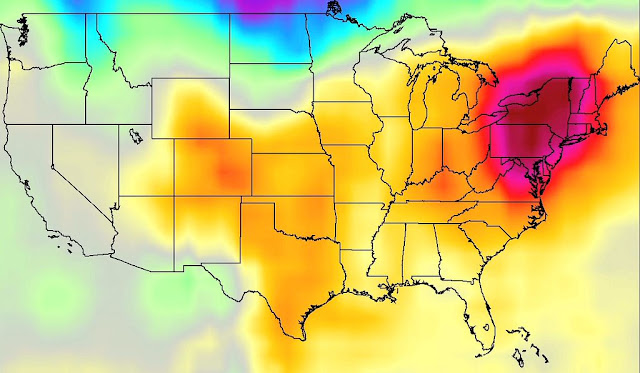 |
| Understanding the Recent Heat Wave Phenomenon in India |
An intense heat wave has swept across significant portions of India, with temperatures soaring well above normal levels. This occurrence marks the second spell of intense heat in April alone, affecting various regions including Odisha, Jharkhand, West Bengal, Telangana, Andhra Pradesh, Tamil Nadu, and Gujarat.
Definition of a Heat Wave:
A heat wave refers to a condition where air temperatures rise to levels that pose a significant threat to human health upon exposure. It is characterized by specific temperature thresholds or departures from normal conditions. In certain contexts, heat waves are determined based on factors such as temperature-humidity index or extreme temperature percentiles.
Criteria for Identifying Heat Waves:
The Indian Meteorological Department (IMD) designates a heat wave when maximum temperatures reach at least 40°C in plains, 37°C in coastal areas, and 30°C in hilly regions, with departures from normal exceeding 4.5°C. A severe heat wave is declared if the departure surpasses 6.4°C.
Impact on Lok Sabha Elections:
The timing of this heat wave coincides with the seven-phase Lok Sabha elections, raising concerns about its potential impact on voter turnout and health risks for the electorate.
Predictions and Concerns:
IMD forecasts indicate an increase in heat wave days for April and the subsequent months, with several regions likely to experience more than the usual number of such days. This prediction raises concerns about strain on power grids, water shortages, and agricultural implications.
Potential Impacts and Weather Patterns:
The intense heat may strain infrastructure, particularly power grids, and exacerbate water scarcity issues in affected areas. Additionally, global weather agencies are anticipating La Niña conditions later in the year, which could influence monsoon patterns and rainfall distribution.
Overview of the India Meteorological Department (IMD):
Established in 1875, the IMD serves as India's national meteorological service, headquartered in New Delhi. It is responsible for meteorological observations, weather forecasting, and seismology, operating numerous observation stations across India and Antarctica. The IMD collaborates with international organizations like the World Meteorological Organization (WMO) and has played a crucial role in providing timely warnings during natural disasters such as cyclones.
Regional Temperature Trends:
Recent temperature data from the IMD indicates significant temperature spikes in various regions including Odisha, Rayalaseema, West Bengal, Jharkhand, Vidarbha, Chhattisgarh, Madhya Pradesh, Telangana, Andhra Pradesh, Bihar, Tamil Nadu, Puducherry, and Uttar Pradesh.
